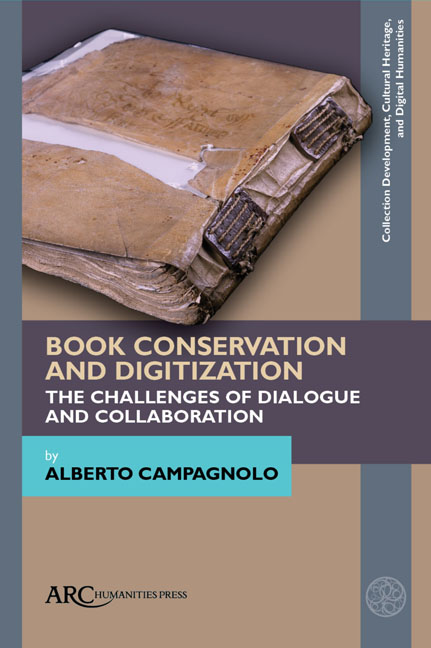Chapter 12 - The Digitization of Manuscripts from the Point of View of a Book Conservator
Published online by Cambridge University Press: 20 November 2020
Summary
SINCE 2008, WITH six years of major funding provided by the National Endowment for the Humanities and assistance from a private donor, the Walters Art Museum in Baltimore has been creating full digital surrogates of its illuminated manuscripts and rare books and making them available online for unrestricted use under a Creative Commons CC0 licence. We are now almost halfway through the collection of nearly 1,000 codices, and single leaves. Images of our manuscripts are being used by scholars around the world for research and publication and by the public for a wide variety of applications. From its inception this ambitious undertaking has been a collaboration between the Walters Book and Paper Conservation Laboratory, the Digitization Studio, and the Manuscript and Rare Book department. The Walters Art Museum is proud to have the third-oldest conservation department in the country and the preservation of the collections is included as part of our mission. Conservators from the Book and Paper Lab have been involved from the outset of the manuscript digitization program to ensure that these inherently fragile objects would be stable enough to be handled and photographed, and that no damage would occur during the digitization process.
The idea of digitizing the manuscript collection originated with former curator Will Noel, who was hired in 1997. He was determined to expose “as many people to the art of the book as possible” by making the Walters illuminated manuscripts, one of the best collections of manuscripts in the country, accessible by displaying them throughout the museum and in international loan exhibitions, and by putting them on CD-ROM so that they would be available to all. Ten years later, major advances had been made in the digital cataloguing of the manuscript collection, and the museum was gradually moving in the same direction. Inspired by these developments, Will conceived of a three-year project to digitally photograph the illuminated folios of all of the manuscripts and to put the estimated 20,000 images online, along with the digital data, for use by scholars and the general public. However, in the summer of 2007, he learned of specialized equipment that would make it possible for an entire manuscript to be digitized from cover to cover.
- Type
- Chapter
- Information
- Book Conservation and DigitizationThe Challenges of Dialogue and Collaboration, pp. 199 - 216Publisher: Amsterdam University PressPrint publication year: 2020



